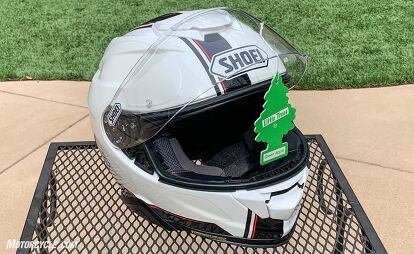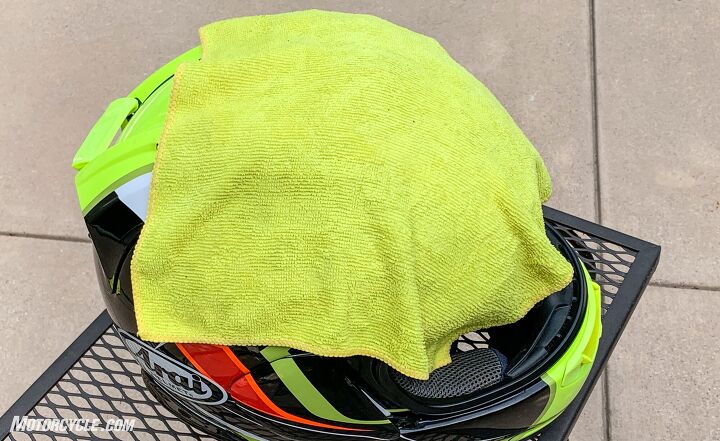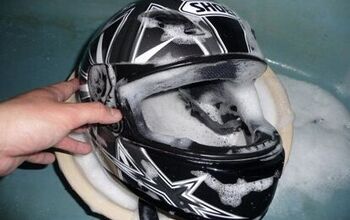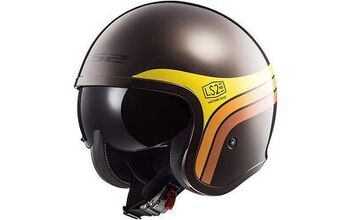How To Clean A Motorcycle Helmet

Time to de-funk your lid for the riding season
Let us sing a song of praise to our motorcycle helmets! Their primary purpose is to sacrifice themselves to protect our noggins. When you bang your head, their outer shell crushes to spread out and lessen the force of the impact before the soft EPS liner compresses to mitigate G-forces before they reach your delicate brain. But that’s not all helmets do. They protect you from abrasion in a slide, keeping your face pretty, and they absorb all manner of small impacts from juicy or stinging bugs to pebbles that your riding buddy’s sticky rear tire kicks up to face level. On the inside, their padding helps keep you comfortable by wicking away sweat while doing its best to limit noise and protect your hearing.
Shop for Microfiber Cloths here
Shop for S100 Detail & Wax here
Shop for Motorex Helmet Cleaner here
All of this means that you need to care for the lid that cares for you. The exterior should be cleaned and polished regularly. Special care should be taken on the delicate surfaces, particularly the visor. The interior has its own set of needs. The intimate contact it has with your face and scalp means that the liner absorbs your oils and sweat, leading to the dreaded helmet funk. However, with a little love, you can keep your helmet looking and smelling great for years, extending the useful life of the most important – and often most expensive – pieces of protective gear many motorcyclists own.
Exterior Cleaning
When it comes to your helmet’s exterior, there are two levels of cleaning. The first is a quick post-ride cleaning/wipe down. The second, we’ll call a deep cleaning that you do a couple of times a season.
To keep your helmet clean and not allow the dead bugs to harden and possibly etch themselves into your helmet’s finish, we recommend a quick post-ride cleaning. Often, just wetting a paper towel or microfiber cloth and laying it over the goo for a minute or two will be enough to soften up the debris. Then use a cloth/towel or two to gently scrub the surface until it shines. Stubborn crust can be removed by using a motorcycle-specific cleaner, like our current favorite S100 Detail & Wax. Do not use harsh chemicals. Window cleaner and dish soap are too strong for use on your helmet. Window cleaner, in particular, can dry out and accelerate the aging of your helmet’s surface. If you ask the people who maintain helmets for a living, the Arai and Shoei support at racing series, they’ll tell you that they just use water and elbow grease.
A deep cleaning of your helmet starts out in a similar fashion with placing warm, wet microfiber cloths over the helmet’s exterior to soften the dirt. Start by removing your visor. We’ll wash it separately. If your helmet is extremely dirty, like a mud-covered off-road helmet, don’t be afraid to hold it under running water to flush away the biggest chunks of dirt. (Just be sure to remove any electronics, such as helmet communicators first.) Wiping built-up dirt off a helmet – even with a wet cloth – could scratch the finish. Don’t worry if you get the interior wet, it will dry out, and you can assist it with a fan (never a hair dryer).
Using microfiber cloths soaked in water and a mild soapy solution (baby shampoo works great), wipe away the dirt. Rinse the cloth frequently. Cruft caught in vents or visor seals can be removed with a soft-bristled toothbrush or Q-Tip. Once the helmet’s surface is clean, dry it off with a clean microfiber cloth. If you want to make sure the helmet is easier to clean in the future, you can give it a coat of carnauba wax or do it in a spray-on manner with S100 Detail & Wax.
The Delicate Visor
The visor gets special treatment because some manufacturers use special coatings on the interior to prevent fogging, and cleaning this with harsh chemicals could render it useless. With warm weather and mild soap on your fingers wet the visor and then clean it with the lightest touch possible. Rinse it with warm water, and dry it with a clean microfiber cloth.
If your faceshield uses a Pinlock Visor, you’ll want to wash it the same way, but you’ll need to be even more careful with the easy-to-scratch surface of the Pinlock. Do not dry it with a cloth, though. You can blow the excess water off with a hair dryer set to cool and then let it air dry before remounting it on your face shield.
Interior Rejuvenation
The easiest way to clean your helmet interior is to remove the liner and padding (if possible) and place it in a mesh garment bag. Then place it in your washing machine on the most delicate setting and wash with Woolite. Take it out of the machine immediately and let it air dry. If you want to speed it up, use a fan to blow air across it. Never use a hair dryer because it could damage the glues holding the liner and padding together.
If you can’t remove the helmet liner, you can still clean the interior, but it will take significantly longer to dry. You’ll need clean cloths and a bowl of mild soapy warm water. Remove any liner components that you can. Also, remove any electronics, like a communication system. Then with the soapy cloth, begin to scrub the interior of the helmet one section at a time. Don’t be afraid to saturate the liner as you scrub it. After each section is cleaned, scrub it out with clean cloths saturated with clean warm water. You want to get all of the soap out of the liner and the padding. Don’t be afraid to really saturate the liner with clean wet rags as the final step.
To dry the helmet interior, press the liner and padding with clean dry cloths until no more water comes out. Then place the helmet in a place with good air circulation to dry. Helmet manufacturers recommend that you not leave them in the sun to accelerate the process. Instead, put the helmet in front of a fan to increase the airflow over it.
Finally, a word of warning about helmet interiors. Only use cleaners that are specifically manufactured for helmets, but be careful, some cleaners are for the exterior only. So, make sure you’ve got the right type of cleaner. We are quite fond of Motorex Helmet Cleaner. Also, don’t be tempted to deodorize by wiping the interior with dryer sheets. It may smell good, but these fabric softeners contain chemicals that may irritate the skin in the concentrated form they are in on the sheets.
If you take care of the interior and exterior of your helmet, you can keep it looking new for many years. We certainly don’t want to ride around in a ratty-looking helmet, and we’re pretty sure that nobody wants to stick their head in one that smells like old socks. Go ahead and clean your helmet today.
Shop for Microfiber Cloths here
Shop for S100 Detail & Wax here
Shop for Motorex Helmet Cleaner here
We are committed to finding, researching, and recommending the best products. We earn commissions from purchases you make using the retail links in our product reviews and other articles. Learn more about how this works.

Like most of the best happenings in his life, Evans stumbled into his motojournalism career. While on his way to a planned life in academia, he applied for a job at a motorcycle magazine, thinking he’d get the opportunity to write some freelance articles. Instead, he was offered a full-time job in which he discovered he could actually get paid to ride other people’s motorcycles – and he’s never looked back. Over the 25 years he’s been in the motorcycle industry, Evans has written two books, 101 Sportbike Performance Projects and How to Modify Your Metric Cruiser, and has ridden just about every production motorcycle manufactured. Evans has a deep love of motorcycles and believes they are a force for good in the world.
More by Evans Brasfield











































Comments
Join the conversation
Having a big plastic sink in the laundry room has been great for my gear sanitation. My dirt bike helmet gets loaded with sweat and dirt, which is not surprising. I just dunk the whole thing in the sink with some baby shampoo and have at it.
Colorado where I live is super dry. Can hang it up and it will be merely damp in a few hours, bone dry the next day. I don't wash my street helmet too often, but the dirt bike helmet gets a bath pretty much every time I ride, cuz it gets gross in no time.
I plunk the dirt bike goggles in there too - sweaty nasty things they are. Oh, and the shin/knee guards. Dunno why those are so "special" but they can really stink bad. The pants and jersey go in the washer, the chest protector fits in the sink too. It is a big sink :)
Boots? I blast though off and leave them in the sun. They are some tortured pieces of leather at this point - LOL
Thank you for the information.
I have a question can I Dry-wash the interior or should I always wash it with hands? I live in a cold area and it takes to much time to dry.
I have checked many cleaning motorcycle helmet articles and watched few videos on YouTube but I didn't get a satisfied answer. Thanks for the help. :)